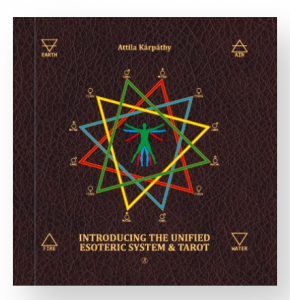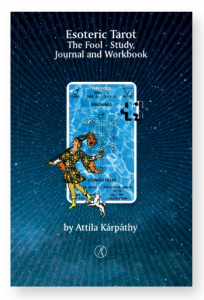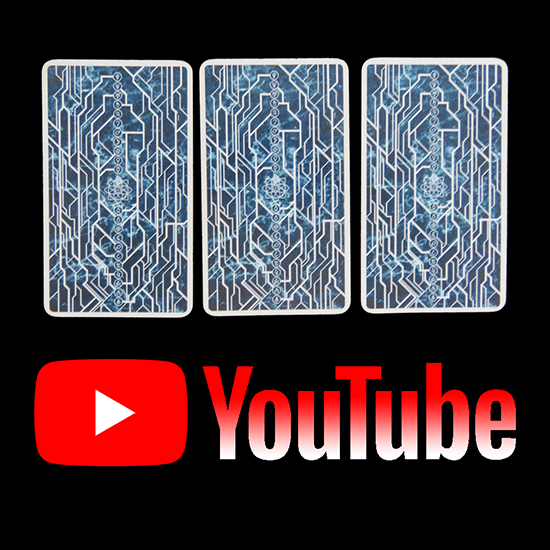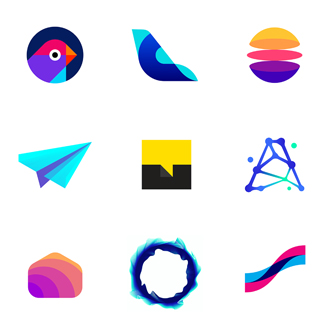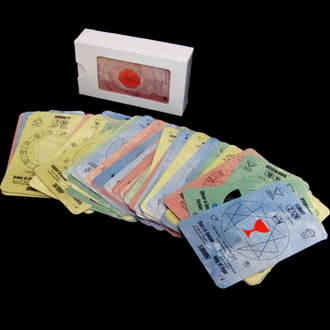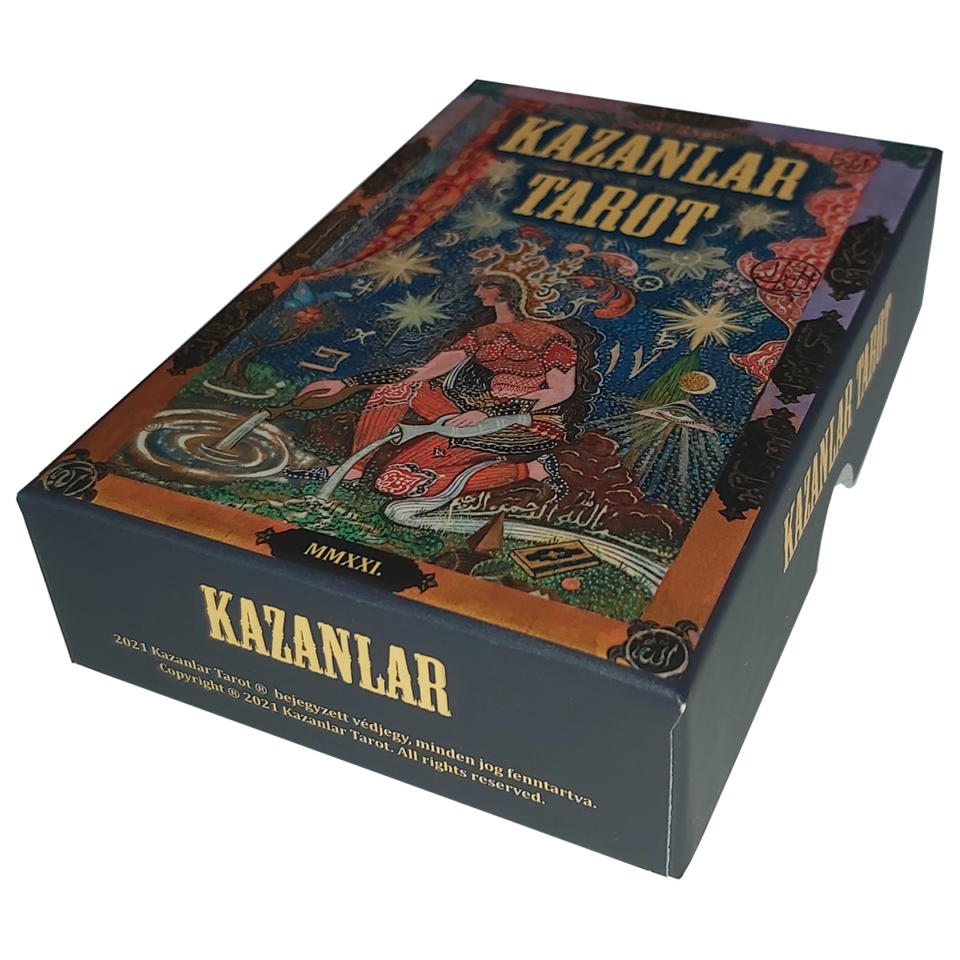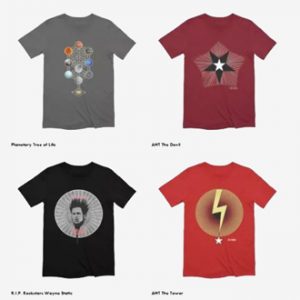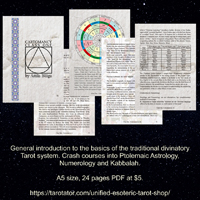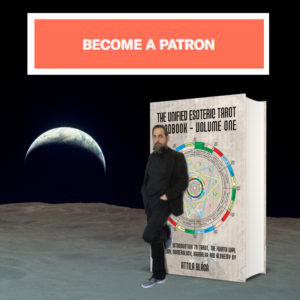Acrylic paint on canvas.
24×30 cm (9.44 x 11.81 inch).
Private collection.
Entitled Strength is my third interpretation of Saint George slaying the dragon.
The primary source for the painting is a church mural from Moldavia.
Interestingly, in this version, Saint George is not riding a horse.
The dragon is a hybrid monster rooted in ancient mythology.
Various dragons and winged lions populate ancient mythology from the Sumerian Anzu, Lamassu and the magical lion from the epic of Gilgamesh, Dedun from the Nubian mythology, Aker, Arensnuphis, Bastet, Bes and Chnoubis from Egyptian mythology, and the Griffin and Chimera in the Greek mythology. Several winged lions are also mentioned in the Bible.
The work emphasises more visible parallels between the Strength card and the Tiamat story. However, the roles are inverted. Just like in the Strength Tarot card, Tiamat is slaying the dragon. It is a bold statement that goes back to the story’s origins and the part of history that has been erased and forgotten.
The dragon embodies desire. Slaying the dragons symbolises our struggle to overcome primary instincts.
It is a new kind of hybrid monster. Our modern world has its particularities and challenges. Once again, history is altered and rewritten to fit current trends and distorted perceptions. Nothing is what it seems.
According to Wikipedia, a symbol is a mark, sign, or word that indicates, signifies, or is understood as representing an idea, object, or relationship. Symbols allow people to go beyond what is known or seen by creating linkages between otherwise different concepts and experiences.
However, what a symbol represents may change according to different perspectives in time and interpretations.
Let’s take the example of the rainbow.
The rainbow symbolises the covenant between Noha, the representative of humanity, and G_d after the Deluge when G_d promises that there will be no more floods.
“Then G_d said to Noah and to his sons with him: “I now establish my covenant with you and with your descendants after you and with every living creature that was with you – the birds, the livestock and all the wild animals, all those that came out of the ark with you – every living creature on earth. I establish my covenant with you: Never again will all life be destroyed by the waters of a flood; never again will there be a flood to destroy the earth.
And G_d said, “This is the sign of the covenant I am making between me and you and every living creature with you, a covenant for all generations to come: I have set my rainbow in the clouds, and it will be the sign of the covenant between me and the earth. Whenever I bring clouds over the earth, and the rainbow appears in the clouds, I will remember my covenant between me and you and all living creatures of every kind. Never again will the waters become a flood to destroy all life. Whenever the rainbow appears in the clouds, I will see it and remember the everlasting covenant between G_d and all living creatures of every kind on the earth.”
(Genesis 9:8-16, New International Version)
Similarly to the bitten apple, the LGBT community and their representatives seem to have a weakness in borrowing, reinterpreting and perverting biblical symbols for their benefit.
The rainbow became a symbol of the LGBTQ+ (plus, plus, plus, etc) community in the late 1970s, largely due to the work of artist and activist Gilbert Baker. In 1978, Baker was commissioned by Harvey Milk, a prominent gay rights leader and one of the first openly gay elected officials in the U.S., to create a symbol of pride for the LGBTQ+ community. Inspired by the diversity and beauty he saw within the community, Baker designed the first rainbow flag to represent unity and inclusion.
The original flag, first flown on June 25, 1978, at the San Francisco Gay Freedom Day Parade, had eight colours, each representing a different concept: hot pink for sex, red for life, orange for healing, yellow for sunlight, green for nature, turquoise for magic or art, indigo for serenity, and violet for spirit.
Soon after the flag’s debut, the pink fabric was hard to come by, so the flag was simplified to six colours by 1979, dropping pink and later combining turquoise and indigo into a single royal blue stripe. This six-colour version, with red, orange, yellow, green, blue, and violet, became the widely recognised symbol of the LGBTQ+ community.
Nowadays, most people associate the rainbow with the LGBTQ+ and forget about G_d’s covenant with Noha.
My painting is a reminder that today started yesterday, and without the past, there is no future.
Saint George was an early Christian martyr who became an ideal of martial valour and selflessness during the Middle Ages. He is the patron saint of England and Georgia and is venerated as one of the 14 Auxiliary Saints, also known as the Holy Helpers.
Nothing of George’s life or deeds can be established, but tradition holds that he was a Roman soldier and was tortured and decapitated under Diocletian’s persecution of Christians in 303.
Legends about him as a warrior-saint, dating from the 6th century, became popular and increasingly extravagant. Jacob de Voragine’s “Legenda aurea” (1265–66; Golden Legend) repeats the story of his rescuing a Libyan king’s daughter from a dragon and then slaying the monster.
Saint George’s slaying of the dragon may be a Christian version of the legend of Perseus, who was said to have rescued Andromeda from a sea monster.
We can trace the myth of the “dragon slayer” to the Babylonian epic of creation, the Enûma Elish, in which Tiamat, the primordial goddess of the sea, is slain by the storm-god Marduk.
There are two parts to the Tiamat mythos. In the first, she is a creator goddess, through a sacred marriage between different waters, peacefully creating the cosmos through successive generations. In the second Chaoskampf, Tiamat is considered the monstrous embodiment of primordial chaos.
The change of optics occurred during the power shift from matriarchy to patriarchy. As a result, the creator goddess has been changed into the monstrous embodiment of primordial chaos, and a new saviour male god emerged.
A similar change of perception can be observed when the Babylonian goddess Astarte turns into the demon Astaroth.
The Drachenkampf mytheme, the chief god in the role of the hero slaying a sea serpent, is widespread both in the ancient Near East and in Indo-European mythology. Examples include Lotan and Hadad, Leviathan and Yahweh, Tiamat and Marduk, Illuyanka and Tarhunt, and Yammu and Baal in the Baal Cycle.
In Nordic mythology, Jörmungandr was a sea serpent or worm so long that it encircled the entire world, Midgard.Sea serpents also appear frequently in later Scandinavian folklore, particularly in that of Norway, such as an account that in 1028 AD, Saint Olaf killed a sea serpent in Valldal in Norway, throwing its body onto the mountain Syltefjellet.
In antiquity, dragons were envisioned as giant serpentine monsters, with the image of a dragon with two or four legs and wings developing during the Middle Ages.
Although many cultures deeply fear the dragon and other serpent-like creatures, Chinese mythology has a very different perspective. They believe the dragon is responsible for many benevolent gifts, such as good rains that bring good harvests – and perhaps even life itself.
A dragon is any form of serpent that has a fearsome nature. This is indicated by the word ‘drakon,’ derived from the English word ‘dragon’. ‘Drakon’ means ‘large serpent’ or ‘sea serpent.’ Most dragons are described as being evil.
The saint’s veneration of George dates to the fifth or fourth century. The addition of the dragon legend dates to the eleventh century.
The scene depicted by Saint George’s slaying of the dragon also resembles what is shown in the Tarot card, Strength.
The main difference is that the character taming the lion is a woman.
The Strength card represents an ancient, unaltered archetype conceived before the Christian era.
Although the first physically known Tarot deck might have been the Visconti-Sforza Tarot produced around 1451 in Northern Italy, the origin of the Tarot remains unknown. The blueprints for the deck created in Italy also have ancient and unknown origins.
The Tarot deck is an instrument to preserve and transmit (esoteric) knowledge unaltered.
The Strength card symbolises our capability to overcome instinct and defeat temptation.
In the early decks called Fortitude, Strength is the second of the Four Cardinal Virtues portrayed in the Major Arcana.
The four cardinal virtues are prudence, justice, fortitude, and temperance. Also called Courage from the Latin fortitudo, it represents forbearance, strength, endurance, fortitude, dedication, and the ability to confront fear, uncertainty, and intimidation.
The card represents the classic confrontation of Virtues and Vices, primarily described by Aurelius Clemens Prudentius in his Psychomachia in the fourth century.
The white woman and the red lion address the archetypal beauty and the beast theme. The release of the one and the salvation of the other depend on each other. The woman represents innocence, and the lion expresses wildness. In the Jungian interpretation, they may represent anima and animus but also refer to the Hero archetype.
In the context of the Renaissance, the original image of the Strength card could have been inspired by Cyrene wrestling with a lion that attacked her father’s sheep.
However, other observers commented that the prototype was probably male, inspired by Samson breaking one of the temple’s pillars. Hercules and the Nemean lion could have also inspired the card.
Another possible source can be the anecdote of Gerasimus taming the lion. The saint tamed the animal by removing a thorn from its paw and taught it obedience.
Perhaps it is just another example of changing genders and attributes over time.
I suspect the Strength card’s source is a twisted version of the myth of Tiamat.
Even if the world has changed and Tiamat, from the once benevolent mother of all, has been transformed into a sea monster and eventually slain by Marduk, she survives and resists silently.
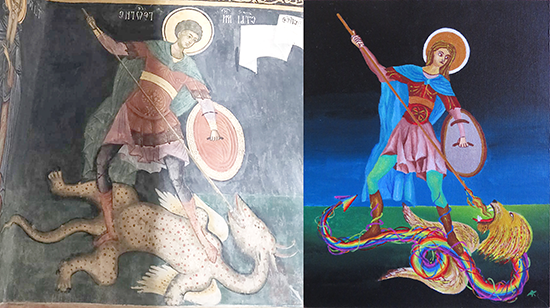
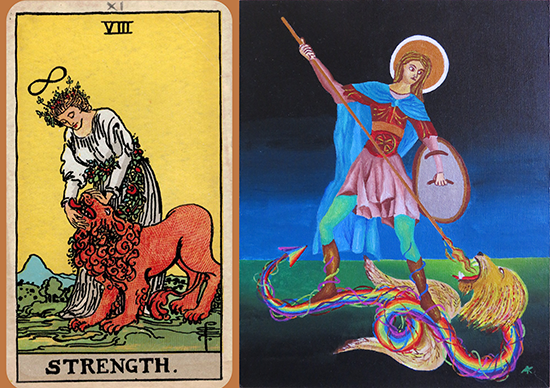
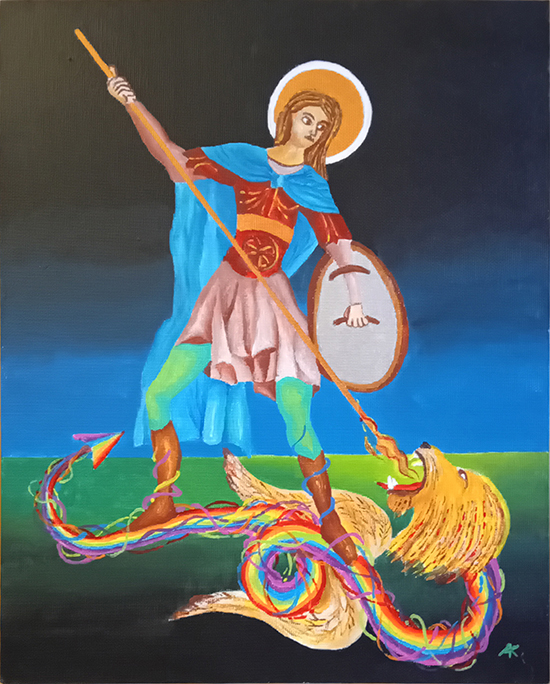
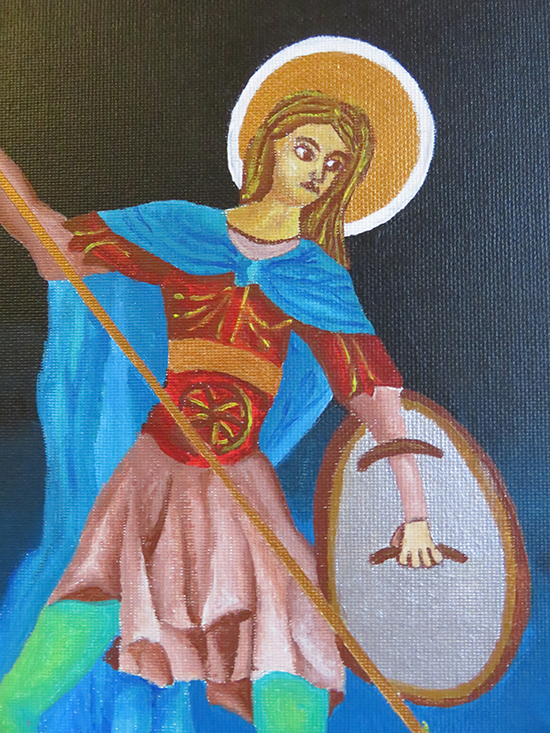
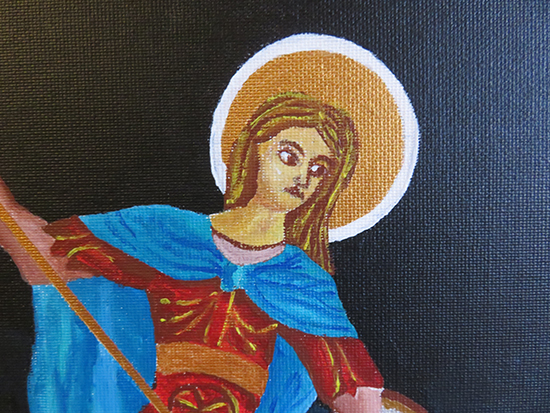
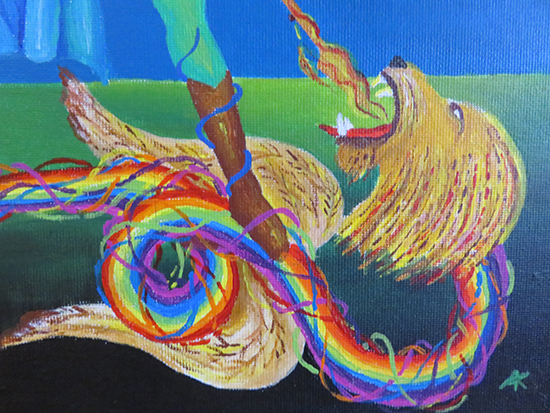
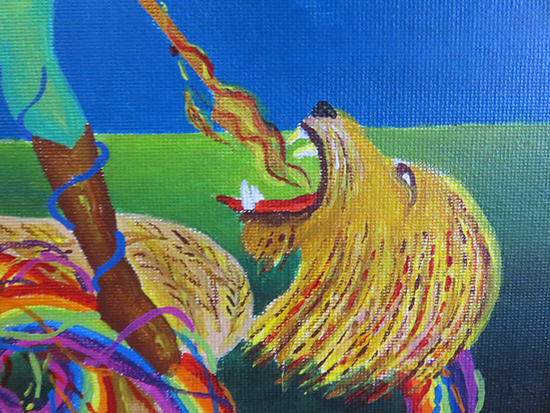
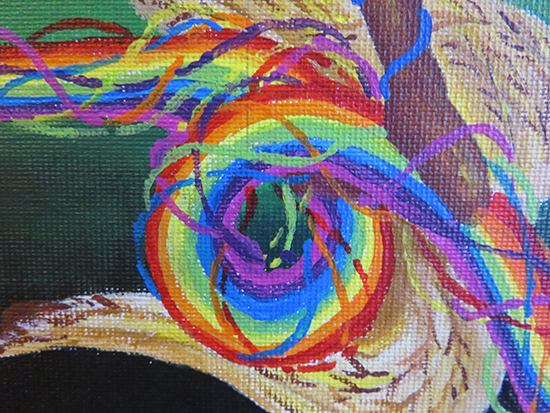
#art #painting #attilakarpathy #tarot #strength #saintgeorge #tiamat


